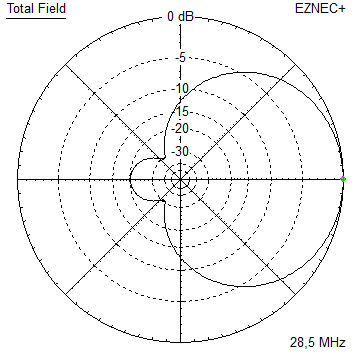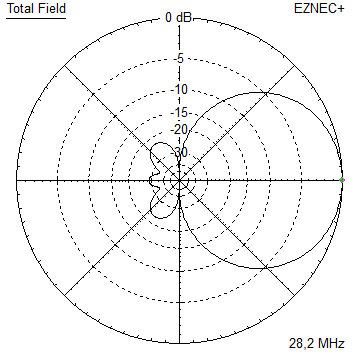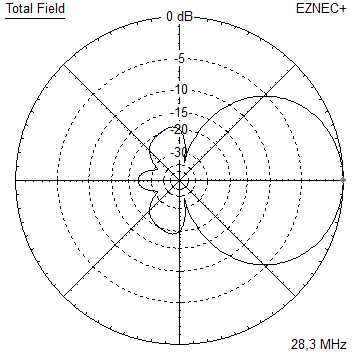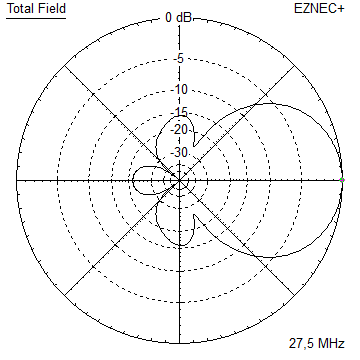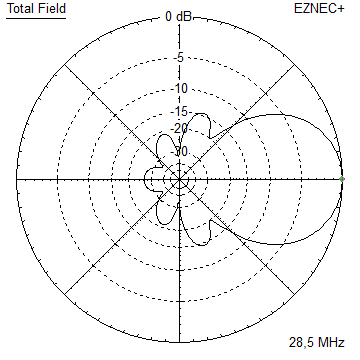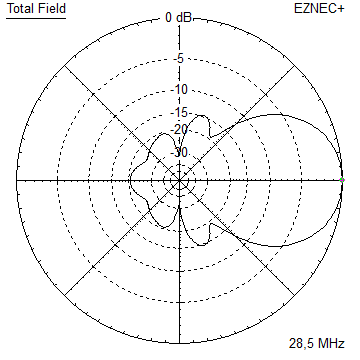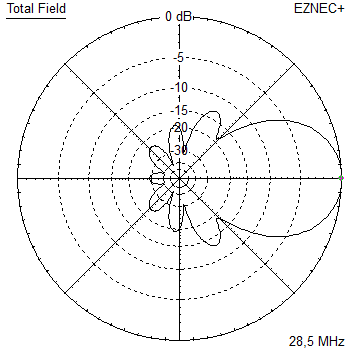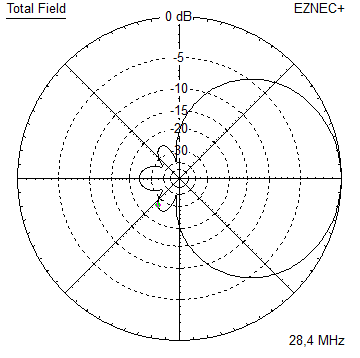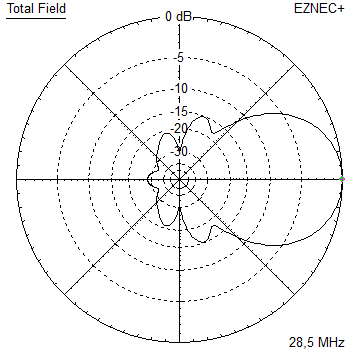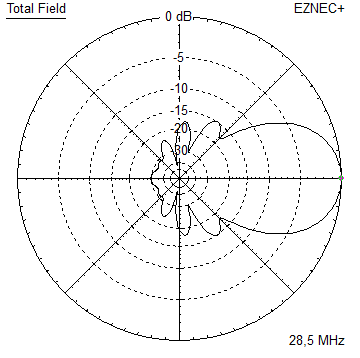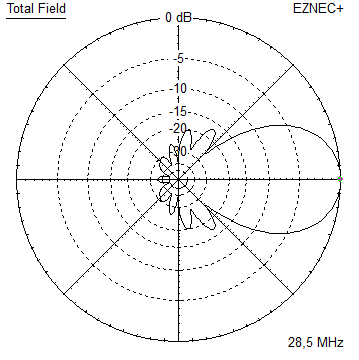
YBN 28-7w with straight split Dipole
Digi Modes + SSB band 28.0 to 29 MHz
On 28 MHz we should less look for gain but very clean directivity, because if the band is open successful DX more or less comes down to fade out unwanted signals. If we can easily produce a signal that enables us to ping our own echo when twice (!) around the globe with less than 100 watts of output, we may pass on 0.5 dB gain. And when band is closed that little bit would not help at all.
The patterns scattering factor (dt.: Streufaktor) as ratio of all rear and side lobes against the beam lobe is what we should look for in first place.
Design date of issue: 2020.10.04
Current distribution

Performance Data (28.5 MHz, 16 mm el.)
Gain vs. isotr. Rad. 12.2 dBi Gain vs. Dipole 10.1 dBD -3 dB E-plane 44.8 deg. -3 dB H-plane 52.6 deg. F/B -20.5 dB F/R -8.3 dB Impedance 50 ohms Mechan. Length 13685 mm Electr. Length 1.30 λ Stacking Dist. h-pol. (28.5 MHz) top-to-bottom 11.9 m or 38.9 ft side-by-side 13.8 m or 45.3 ft
Geometry
For building on a 40-50 mm boom, 16 mm elements insulated with hydraulic clamps like from co. Stauff:

How many pageviews did this design get since Oct. 2020?
Pattern and VSWR Plots
Elevation and Azimuth plot at 28.5 MHz


SWR and Return Loss plots - simulated with 4nec2


Radiation pattern with Ground Gain
At 12 m above perfect ground

Gain vs. isotr. Rad. 17.7 dBi at 12 deg. Gain vs. Dipole 15.6 dBD F/B -20.8 dB at 168 deg.
At 20 m above perfect ground

Gain vs. isotr. Rad. 18.0 dBi at 7 deg. Gain vs. Dipole 15.9 dBD F/B -20.4 dB at 173 deg.
Stacking

Elevation plot and data of 7 over 7 array at 12.0 m stacking distance

Gain vs. isotr. Rad. 15.27 dBi Gain vs. Dipole 13.12 dBD F/B -29.1 dB
Elevation plot and data of 7 over 7 array at 11.9 m stacking distance:
Lower Yagi 12 m, upper Yagi 23.9 m above perfect gnd

Gain vs. isotr. Rad. 19.89 dBi at 7 deg. F/B -20.99 dB at 173 deg.
73, Hartmut, DG7YBN
